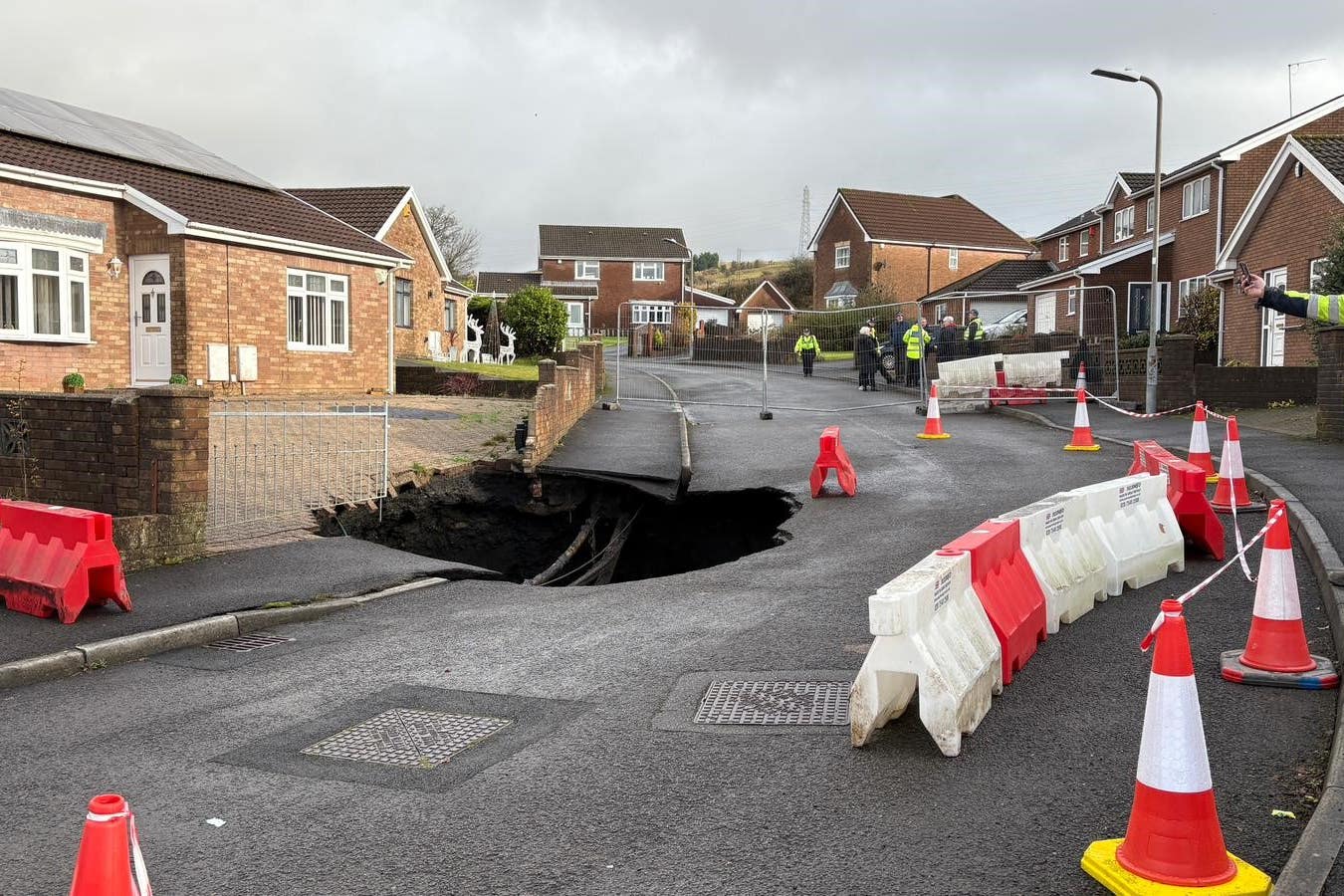How do sinkholes form? What to know as 65ft crater appears on Surrey high street
There are several types of sinkholes, also known as dolines, caused by different processes
A giant 60ft sinkhole has opened up on a Surrey high street.
Surrey Police said on Tuesday that Godstone High Street was closed between Oxted Road and Bletchingley Road following reports of a sinkhole on Monday night.
A number of buildings were evacuated and homes were left without water due to a burst pipe. SES Water said one of its water main pipes had burst in Godstone High Street.
It comes after residents in Merthyr Tydfil were forced to leave their homes for 11 days after a 40ft deep sinkhole opened up on 1 December, forcing around 30 homes to be evacuated.
But what is a sinkhole and how do they form?
What is a sinkhole?
A sinkhole is essentially any hole in the ground created by erosion and the drainage of water. They can be just a few feet across or large enough to swallow whole buildings. Although they’re often the result of natural processes they can also be triggered by human activity.
There are several types of sinkholes, also known as dolines, caused by different processes, according to the British Geological Survey.

Some sinkholes result from the surface dissolution of soluble rock. For example, limestone rocks dissolve when attacked by rainfall or groundwater that is acidic.
Collapse sinkholes are common in parts of South Wales where sandstone rocks overlie cavernous limestone, according to the British Geological Survey.
Some sinkholes are caused not by the dissolution of limestone, but by the erosion of weak material by flowing water.
What causes them?
Sinkholes mainly occur in what is known as ‘karst terrain’; areas of land where soluble bedrock (such as limestone or gypsum) can be dissolved by water. With cover-subsidence sinkholes the bedrock becomes exposed and is gradually worn down over time, with the holes often becoming ponds as the water fills them in.

With a cover-collapse sinkhole this same process occurs out of sight. Naturally occurring cracks and small voids underneath the surface are hollowed out by water erosion, with a cover of soil or sediment remaining over the top. Eventually, as the hole expands this cover can no longer support its own weight and suddenly collapses to reveal the cavern underneath.
Where areas in the UK are most susceptible to sinkholes?
In the UK, sinkhole-prone areas are found throughout, however the majority are small or in rural, highland areas.
They include areas underlain by Carboniferous limestones, notably the Mendips, parts of Wales, the Peak District, and the northern Pennines including the Yorkshire Dales.
The most susceptible area in the UK is the Permian gypsum in north-east England, particularly around Ripon, according to the British Geological Survey.
Sinkholes also occur over salt deposits, commonly in areas such as Cheshire where brine has been extracted.
Join our commenting forum
Join thought-provoking conversations, follow other Independent readers and see their replies
Comments